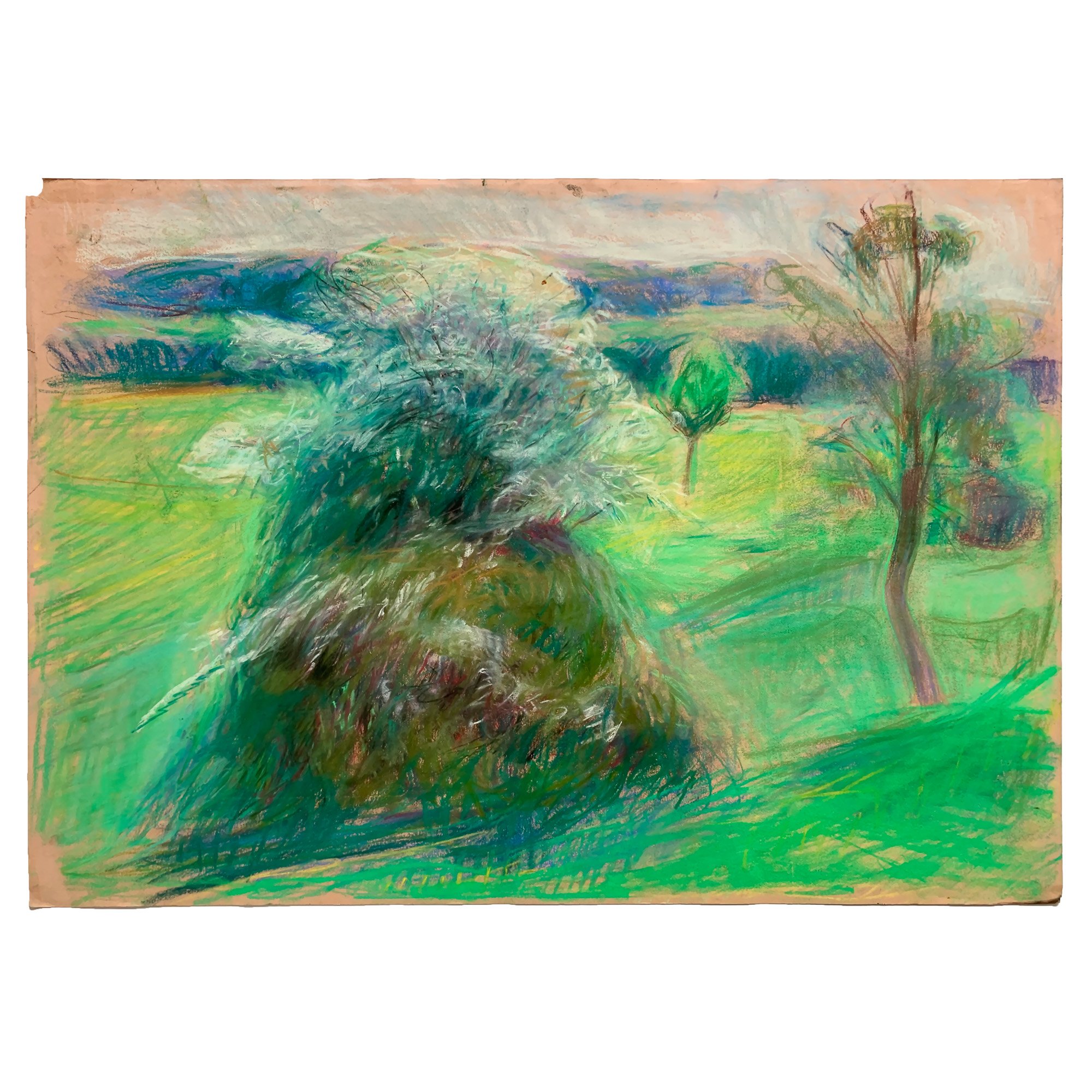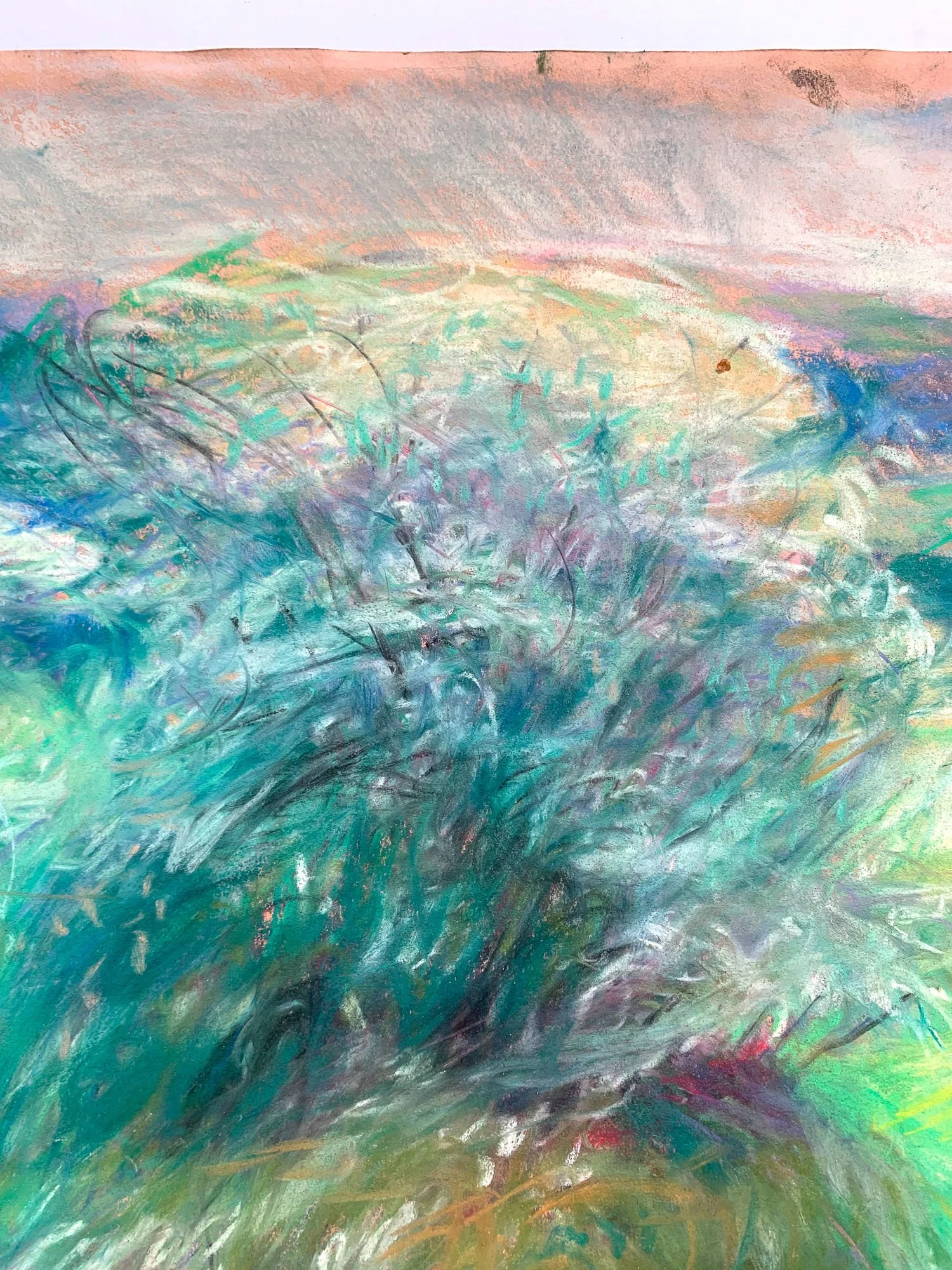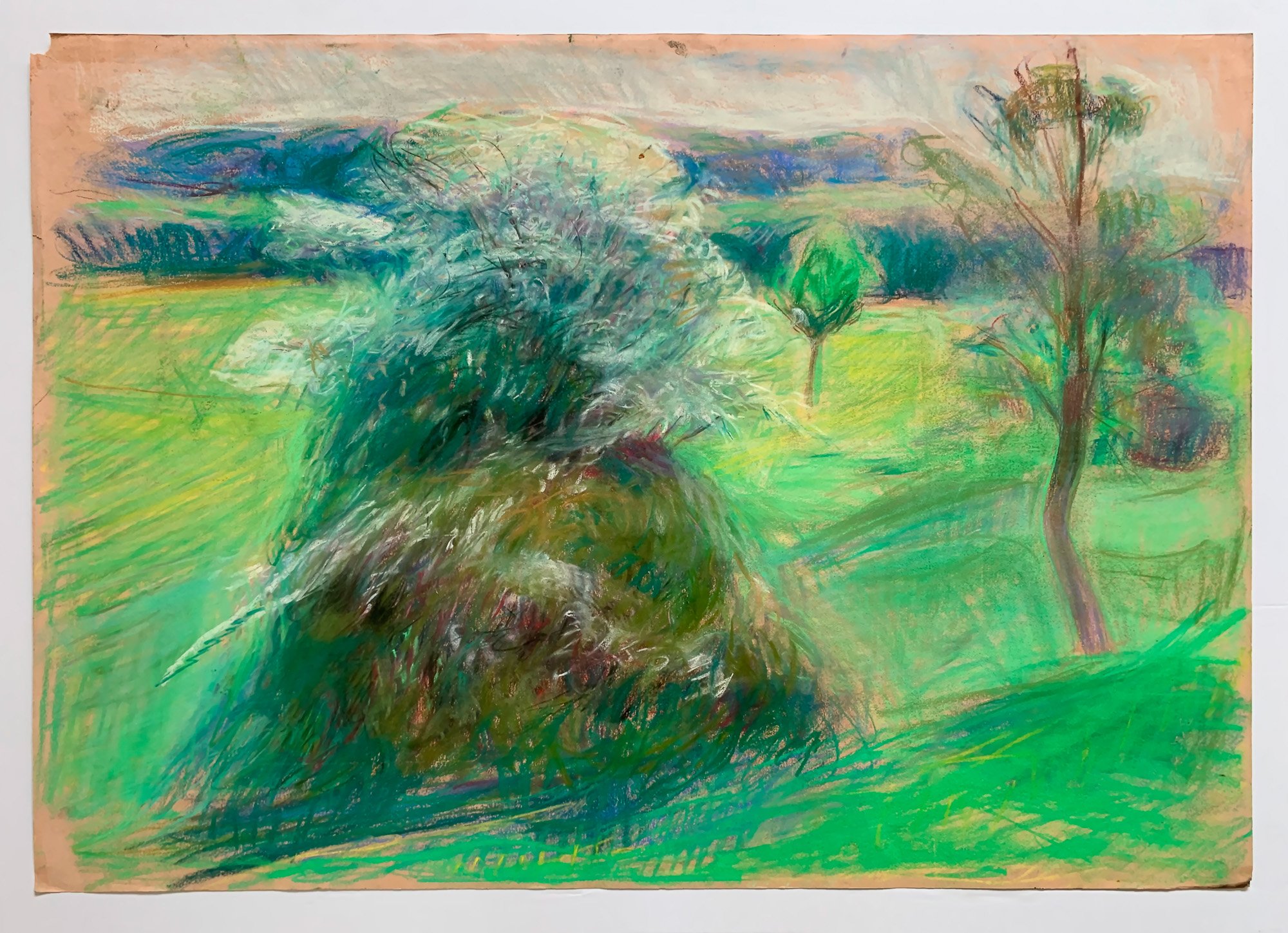 Image 1 of 3
Image 1 of 3

 Image 2 of 3
Image 2 of 3

 Image 3 of 3
Image 3 of 3




'Ridge and Furrow' by Tom Scotcher
'Ridge and Furrow'
59.4 x 84.1 cm
Graphite and Coloured Chalk on Sugar Paper
2024
£600
Bespoke framing available for Greater London collectors only | Lead time is 8 weeks from confirmation
Tom Scotcher (b.1992) is a Lewes based artist who studied Visual Communication (BA Hons) at Central Saint Martins (2011-14) and thereafter at the Royal Drawing School (2016-17). In 2024, Tom was awarded with the Elizabeth Greenshields Foundation Grant of emerging figurative artists to produce a body of work for his solo exhibition, 'Desire Paths'.
This body of work is a continuation of his exploration into the landscape as a place of reverence. I wander through grazed farmland and dense thickets, exploring the countryside to understand the landscape deeply. These short meanderings serve as reconnaissance, where I make quick sketches, notes, and sound recordings to use later in the studio. I often carry my materials and equipment and work directly from life. While outdoors, I am fully present and responsive to my surroundings, a core aspect of my practice. Subsequently, studio work allows me to move beyond the immediacy of plein air observation, incorporating memory and the absence of direct influence, to create images faithful to my experience rather than the exact topography. Returning to a stretch of land to paint is becoming a ritualistic act. The physical effort to transport my materials out into the countryside gives the eventual destination a deeper meaning. I reenact the performance of preparation with muscle memory and begin. Over time the space opens up around me and reveals it’s true cadences. I start to notice things within it’s thickets and hedgerows that only I am observing and experiencing. There are serendipitous fragments that culminate in the mind which don’t always permeate onto the canvas, but I use them to build a sense of this place in my memory. These moments become sacred to me. Being out in the landscape has led me to meet many diverse groups of people. Initially, I anticipated isolation in remote areas and even looked forward to it. However, these encounters have profoundly impacted me. For example, while painting by the river, I encountered illegal mink poachers.
My presence in the act of painting gave me a sense of responsibility, emboldening me to report them to the police. Moreover, I met individuals who offered remarkable insights into the natural and cultural history of the local landscape, which has significantly influenced this body of work and will continue to do so. When working in the studio, I often find that the work can become too laboured and lose its spirit. When this happens, I take it back into the landscape. I am fascinated by the act of returning to a specific place and the deeper connection that develops with increased familiarity. Where does this desire for familiarity and belonging come from? As a landscape artist, I recognise the rich tradition I work within, yet I strive to present my own perspective with clarity and honesty. I believe that painting nature provides a chance to reestablish a profound connection, relevance, and enduring significance with the land.
'Ridge and Furrow'
59.4 x 84.1 cm
Graphite and Coloured Chalk on Sugar Paper
2024
£600
Bespoke framing available for Greater London collectors only | Lead time is 8 weeks from confirmation
Tom Scotcher (b.1992) is a Lewes based artist who studied Visual Communication (BA Hons) at Central Saint Martins (2011-14) and thereafter at the Royal Drawing School (2016-17). In 2024, Tom was awarded with the Elizabeth Greenshields Foundation Grant of emerging figurative artists to produce a body of work for his solo exhibition, 'Desire Paths'.
This body of work is a continuation of his exploration into the landscape as a place of reverence. I wander through grazed farmland and dense thickets, exploring the countryside to understand the landscape deeply. These short meanderings serve as reconnaissance, where I make quick sketches, notes, and sound recordings to use later in the studio. I often carry my materials and equipment and work directly from life. While outdoors, I am fully present and responsive to my surroundings, a core aspect of my practice. Subsequently, studio work allows me to move beyond the immediacy of plein air observation, incorporating memory and the absence of direct influence, to create images faithful to my experience rather than the exact topography. Returning to a stretch of land to paint is becoming a ritualistic act. The physical effort to transport my materials out into the countryside gives the eventual destination a deeper meaning. I reenact the performance of preparation with muscle memory and begin. Over time the space opens up around me and reveals it’s true cadences. I start to notice things within it’s thickets and hedgerows that only I am observing and experiencing. There are serendipitous fragments that culminate in the mind which don’t always permeate onto the canvas, but I use them to build a sense of this place in my memory. These moments become sacred to me. Being out in the landscape has led me to meet many diverse groups of people. Initially, I anticipated isolation in remote areas and even looked forward to it. However, these encounters have profoundly impacted me. For example, while painting by the river, I encountered illegal mink poachers.
My presence in the act of painting gave me a sense of responsibility, emboldening me to report them to the police. Moreover, I met individuals who offered remarkable insights into the natural and cultural history of the local landscape, which has significantly influenced this body of work and will continue to do so. When working in the studio, I often find that the work can become too laboured and lose its spirit. When this happens, I take it back into the landscape. I am fascinated by the act of returning to a specific place and the deeper connection that develops with increased familiarity. Where does this desire for familiarity and belonging come from? As a landscape artist, I recognise the rich tradition I work within, yet I strive to present my own perspective with clarity and honesty. I believe that painting nature provides a chance to reestablish a profound connection, relevance, and enduring significance with the land.
